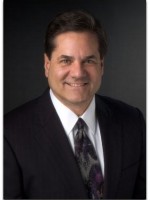The Hidden Cost of a "No Point" Loan
Saturday, January 1, 2011 -
Article by:
Rick Pelleriti - American Capital Corp. -
![]()
Borrowing money to buy a home is one thing, but there is a smarter way to go about it that many mortgage brokers, mortgage bankers (banks) don't share with you.
Here is what you need to know.
As a mortgage banker, I will try to make this as simple as possible.
When you buy a house, and you need a loan, you are essentially buying money. As a mortgage banker, I get that money for you. What I am selling is interest rates, and every interest rate has a price. Here is a very small sample of what a lender's prices might look like.
Interest Rate Price
4.25% 99.000
4.375% 99.500
4.50% 100.000
4.625% 100.500
4.75% 101.000
I will now explain how to interpret this.
First you need to know that these prices come from the lender, which may be a bank like Wells Fargo, There are 3 types of rates:
1. The Wholesale Rate - defined as a price of 100.000.
2. Below Wholesale - defined as a price below 100.000.
3. Retail Rate - defined as a price above 100.000.
Let's start with the wholesale interest rate. In this simple example above, a price of 100.000 corresponds to 4.50%, so I as the mortgage banker could quote you 4.50%, but since that is the wholesale rate, I don't make any money. My compensation then must come from you - the borrower. I may wish to charge you 1%, also called one point (a point is simply one percent of the loan amount). So, on a $400,000 loan, I would charge a loan origination fee of 1%. That means your cost to get a loan at 4.50% would be $4,000.
So far so good.
Now - let's look at another way a mortgage broker or bank can "sell" you this loan. They can offer you the "retail rate," which as mentioned above has a price above 100.000.
So, using the "rate sheet" above, the bank or mortgage broker could quote you 4.75%, and then say there were "NO POINTS," or "NO LOAN ORIGINATION FEE."
You may hear this a lot on the radio or in advertisements, i.e., "no points."
What they don't tell you is that the rate they are quoting is a retail rate, and their compensation comes from the lender. Since the price is 101.000, that means the lender will pay the mortgage broker the 1.0%.
From the standpoint of the bank, this is good - the bank would like to receive an income stream for 30 years at 4.75% versus an income stream at 4.50%, right?
So - what's good for the bank may not be what's good for you, the borrower.
On the one hand, you can save the initial $4,000 by getting a "no point" loan, but on the other hand, you are paying an extra $59.85 per month to save the $4,000. Over the course of the 30 years, do you realize that you are paying an extra $21,546?
Wouldn't you like to have a choice? Wouldn't you like to see all the prices for every interest rate? That's what I do, and I call this transparent lending.
To learn more about this, you may call me at 530-205-9145, or visit my website at www.upfrontmortgagebanker.com
Rick Pelleriti
California's Upfront Mortgage Banker
Didn't find the answer you wanted? Ask one of your own.
Ask our community a question.
Related Articles
Featured Lenders
Lisa Stepp
RBS Citizens
Clifton Park, NY
Cameron Burke
Vision One Mortgage
Huntington Beach, CA
Kat Whitman
Whitman Met, Inc.
Sacramento, CA



